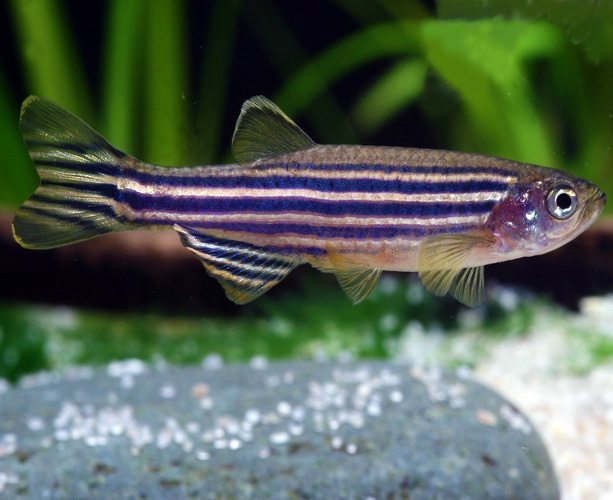Zebra Danios: The Perfect Choice for Freshwater Fish Enthusiasts
Zebra danios hold a special place in the hearts of freshwater fish enthusiasts due to their remarkable ease of care. Not only are they visually appealing with their striking black and white zebra-like patterns, but they are also renowned for their prolific breeding habits, making them an ideal choice for hobbyists looking to engage in breeding projects. In this comprehensive guide, we’ll explore why zebra danios are a favorite among aquarists and provide insights into their care and habitat needs.
Understanding Zebra Danios: A Quick Overview
Common Names: Striped danio, zebra danio, zebrafish
Scientific Name: Danio rerio
Adult Size: 2 inches
Life Expectancy: 5 years
Characteristics and Behavior
Family: Cyprinidae
Origin: Eastern India
Social Behavior: Peaceful, suitable for community tanks
Tank Level: All levels
Minimum Tank Size: 10 gallons
Diet: Omnivore
Breeding: Egglayer
Care Level: Easy
pH: 6.5 to 7.0
Hardness: 5 to 12 dGH
Temperature: 64 to 74 F (18 to 24 C)
Origins and Distribution
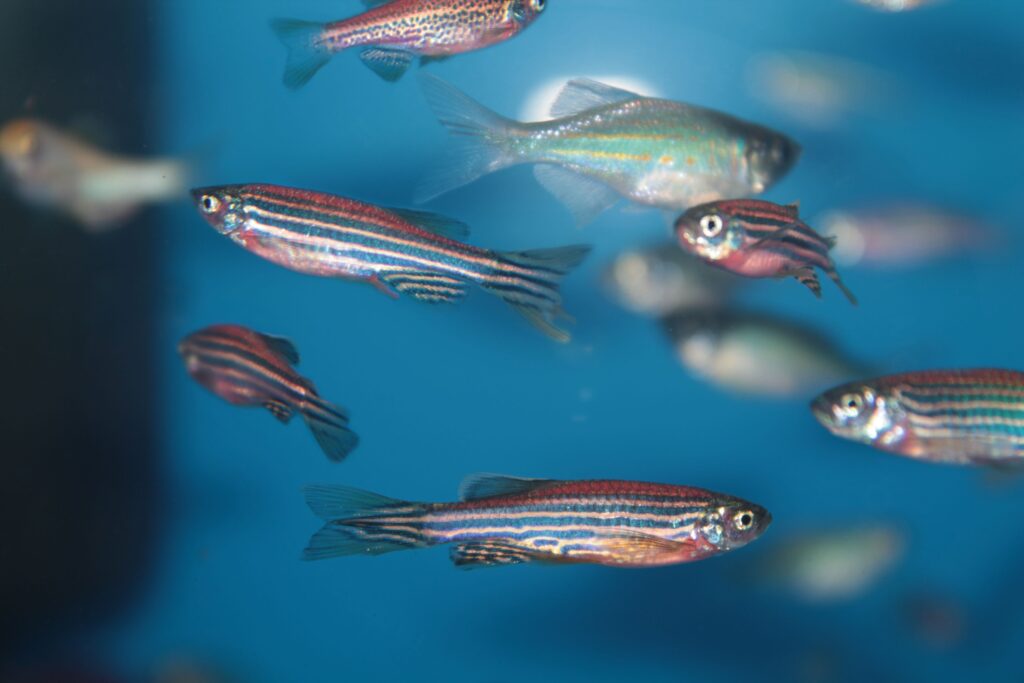
Initially believed to hail from a broader range encompassing Myanmar to Pakistan, it’s now widely accepted that zebra danios originate from a more limited area within India and Bangladesh. Habitat loss and the identification of similar species have contributed to this refined understanding of their natural range. Despite these changes, these hardy fish can inhabit a variety of environments, ranging from fast-moving streams to stagnant ponds.
In the aquarium industry, zebra danios are predominantly captive-bred due to their ease of raising and cost-effectiveness. While this approach has ensured a consistent supply, it’s important to note that captive-bred specimens may be less robust than their wild counterparts. This has led to the availability of various zebra danio varieties in aquarium stores.
Distinctive Colors and Markings
The zebra danio’s visual appeal stems from its distinctive horizontal stripes that stretch from gill to tail. This blue-purple pattern complements their silver-gold, slim bodies. Variations such as albino, golden, veil-tailed, and long-finned zebra danios exist, with the leopard variety being particularly popular. The leopard strain, once considered a separate species, is now recognized as a spotted variation of Danio rerio.
An exciting addition to the zebra danio family is the GloFish. Engineered to exhibit fluorescent colors, these fish possess vibrant body hues like orange, green, blue, purple, or red while retaining their characteristic dark stripes.
Ideal Tankmates and Social Behavior
With their modest size of up to two inches, zebra danios integrate well within a community aquarium. They are generally peaceful but may nip at the fins of certain species, particularly those with long, flowing fins. When selecting tankmates, consider similar-sized danios, barbs, corydoras catfish, tetras, loaches, mollies, platys, and swordtails. Keeping them in groups of five or more is optimal, as they thrive in schools and maintain a hierarchical yet non-aggressive social structure.
Zebra Danio Habitat and Care Tips
Zebra danios are surface-dwelling fish native to moving waters. While they are considered cold-water fish, they adapt well to a range of temperatures. Maintaining water temperatures above 64 F is crucial to prevent susceptibility to diseases. These active fish explore all tank levels, so providing an open swimming space with diffuse lighting and vegetation at the periphery of their habitat is essential. A darker substrate enhances their colors and adds a natural touch to their environment.
Balanced Diet and Feeding Habits
As omnivores, zebra danios are versatile eaters, accepting various foods. Alongside pelleted or flake fish food, they enjoy small live or frozen invertebrates and fresh vegetables. Supplement their diet with freeze-dried brine shrimp or tubifex worms, or offer frozen foods to keep their nutritional intake diverse.
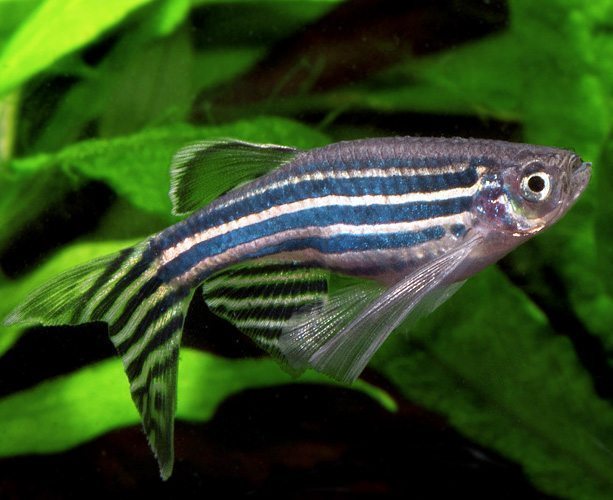
Distinguishing Genders and Breeding Insights
Males and females share identical horizontal stripes and barbels, but females tend to be larger. Males exhibit a more streamlined shape, while females possess a rounder belly, which becomes more pronounced during egg development. Breeding zebra danios is an exciting endeavor, with females capable of spawning every few days after reaching sexual maturity.
Creating a separate breeding tank with shallow water and appropriate substrates facilitates successful breeding. Trigger spawning by slightly raising water temperatures in the early morning. After spawning, it’s crucial to remove the adults to prevent them from consuming the eggs. Once hatched, fry are delicate and require meticulous care.
In Conclusion
Zebra danios are a delight for both novice and experienced aquarists. Their striking appearance, peaceful nature, and adaptable behavior make them a standout choice for community tanks. Whether you’re captivated by their iconic stripes or intrigued by their breeding potential, these fish are sure to enhance your aquarium with their vibrant presence.
The Captivating World of Zebra Danios
Zebra danios, scientifically known as Danio rerio, have captured the hearts of aquarium enthusiasts worldwide. Their captivating appearance, coupled with their ease of care and breeding, makes them an excellent addition to any freshwater aquarium. Let’s dive deeper into the world of zebra danios and uncover more about their habitat, behavior, and breeding intricacies.
Creating the Ideal Habitat
Native to the flowing waters of Eastern India, zebra danios thrive in an environment that mimics their natural habitat. To ensure their well-being, set up an aquarium with proper water parameters. Maintain a pH level between 6.5 and 7.0 and a hardness ranging from 5 to 12 dGH. A temperature range of 64 to 74 F (18 to 24 C) suits them well, although they can tolerate a broader spectrum.
Aquarium Setup: While zebra danios primarily inhabit the upper levels of the water column, they appreciate an aquarium with open spaces for swimming. Incorporate live or artificial plants around the tank’s periphery to provide hiding spots and create a more natural environment. A darker substrate not only highlights their vibrant colors but also complements the aquatic scenery.
Zebra Danios: Social and Peaceful Companions
Known for their peaceful nature, zebra danios can thrive in a community tank with the right tankmates. Avoid pairing them with species that have long, flowing fins, as danios might be tempted to nip at them. Opt for similar-sized fish with compatible temperaments, such as tetras, barbs, and corydoras catfish. Keep in mind that zebra danios are schooling fish, so it’s best to have a group of five or more to encourage their natural behaviors and minimize stress.
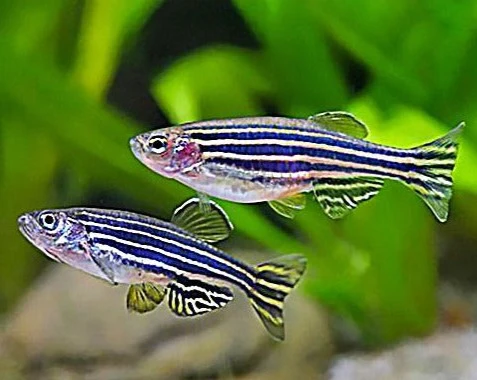
Feeding Habits and Dietary Diversity
Zebra danios are not picky eaters, which makes feeding them a straightforward task. They readily accept high-quality flake or pellet fish food. Enhance their diet by incorporating live or frozen foods like brine shrimp, daphnia, and bloodworms. The addition of vegetable matter, such as blanched spinach or zucchini, contributes to a well-rounded diet.
Breeding Marvel: Unveiling the Egglayers
One of the most intriguing aspects of zebra danios is their exceptional breeding ability. Females can lay eggs every few days once they reach sexual maturity, usually around four months of age. To initiate breeding, create a separate breeding tank with shallow water and fine-leafed plants. Maintain a water temperature of around 78 to 80 F to encourage spawning.
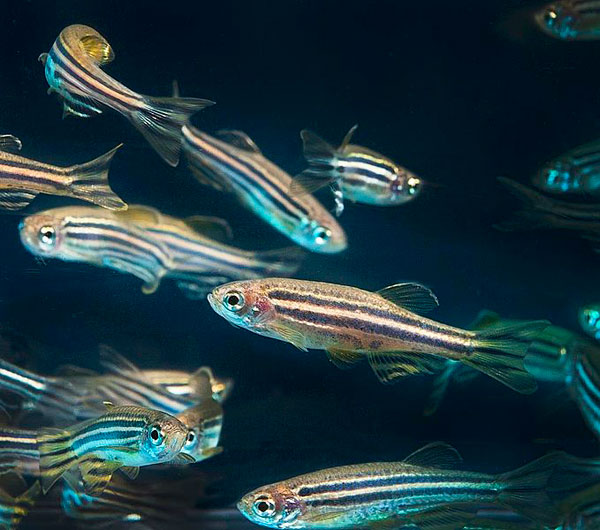
When you notice females with rounded bellies, it’s a sign that they are ready to lay eggs. Transfer one or two females and a few males to the breeding tank to initiate the process. Provide coarse substrate like marbles or gravel at the tank’s bottom to protect the eggs from being consumed by the adults. Alternatively, use a wide-mesh breeding net to prevent the adults from reaching the eggs.
After spawning, remove the adults to prevent them from consuming the eggs. In about two days, the fry will hatch, and you must provide them with appropriate food. Infusoria, newly hatched brine shrimp, and powdered fry food are suitable options. Be cautious not to overfeed, as excess food can quickly degrade water quality.
Embracing the Beauty of Zebra Danios
In conclusion, zebra danios effortlessly combine aesthetic appeal, ease of care, and breeding prowess. Their distinctive zebra-like patterns and peaceful demeanor make them an attractive choice for aquarists of all levels. Whether you’re drawn to their striking appearance, fascinated by their social interactions, or intrigued by their breeding potential, zebra danios are sure to bring joy and vibrancy to your aquarium. By providing a suitable habitat, balanced diet, and understanding their unique behaviors, you can create an environment where these captivating fish thrive and flourish.
Remember, the journey of caring for zebra danios is not just about enhancing your aquarium—it’s also about gaining insights into the intricate world of aquatic life. Enjoy the process, celebrate their successes, and witness the beauty of these remarkable fish as they gracefully navigate their watery realm.



